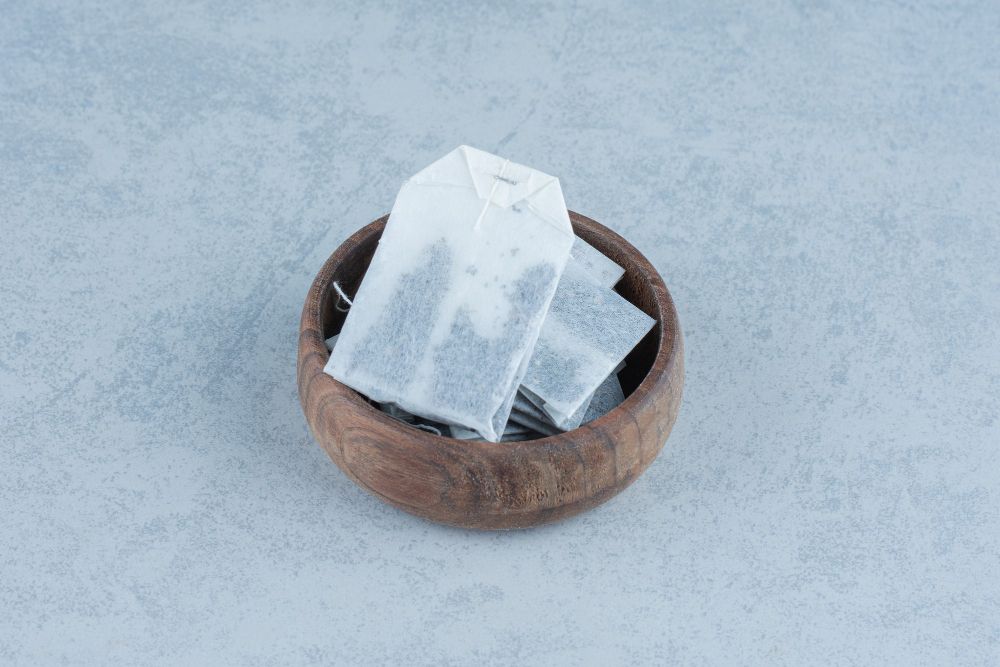
Book Now to Experience
B6 Bust Lift Treatment
1 Minute Self-Registration
Date should not be before minimal date
Author: Leila Tan|Updated: 23 July 2024
Breast implants have become a popular choice for people who want to look better and feel better about themselves. This piece will go into detail about breast implants, talking about things like types, benefits, risks, things to think about, and more. Let's dive into the world of breast implants and find out how they can change lives. In today's world, how you look is a big part of how you feel about yourself and how confident you are. Breast implants can help people who want their breasts to be bigger and more shaped. By getting breast implants, people can get the look they want and improve their general health.

1
Myths and Facts about Breast Implants
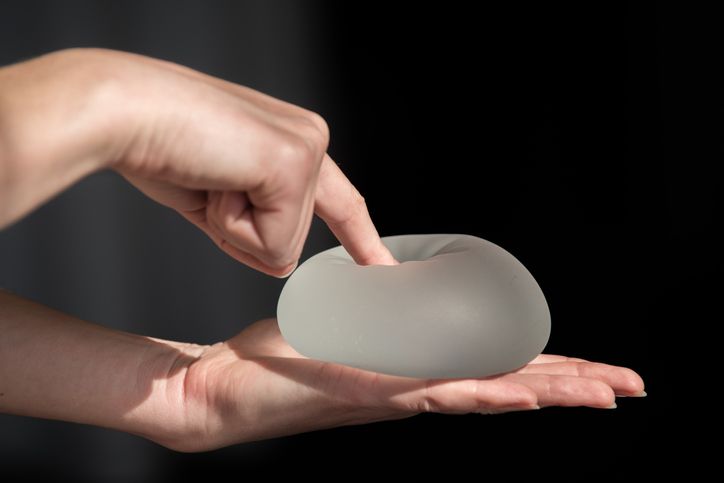
Before we get into the world of breast implants let's go through some myths and facts about them to debunk some common misconceptions and have a clearer understanding.
Breast implants always look fake
Fact: Modern breast implants come in different sizes, shapes, and textures, which makes the results look more realistic. Skilled doctors can help you choose implants that look natural and go with the shape of your body.
Breast implants increase the risk of breast cancer
Fact: Researchers from reputable groups have done a lot of study, and they haven't found any solid proof that silicone or saline breast implants increase the risk of breast cancer. Even if a woman has breast implants, she should still get regular breast cancer checks.
Breast implants need to be replaced every ten years
Fact: Breast implants do not have a set date when they need to be replaced. Even though they are not meant to last forever, many women have had them for more than ten years without any problems. Implants may need to be replaced or taken out if there are problems or if the patient wants to change the size or shape.
Breast implants will prevent breastfeeding
Fact: Most of the time, breast implants don't get in the way of breastfeeding if they are put in correctly and the right surgery methods are used. But it's important to talk to your surgeon about your plans to breastfeed, since some incision sites may be more likely to affect milk tubes.
Breast implants always result in loss of nipple sensation
After getting breast implants, there may be changes in how your nipple feels, but this is not always the case. Changes in sensitivity can be different for each person, and many women still feel normal in their nipples after the operation.
Breast implants make it harder to detect breast cancer
Radiologists are used to working with women who have breast implants because of how current mammography works. It may take more image views to see all of the breast tissue, but implants do not make it harder to find breast cancer.

2
What are Breast Implants and what Types are there?

Implants for the breasts are medical devices that are used to change the size and shape of a person's breasts. Most of the time, they have a silicone shell that is filled with a saltwater solution or silicone gel. When these implants are put into the breast tissue or under the chest muscle, they make the bust look fuller and more balanced.
There are two main kinds of breast implants: those made of saline and those made of silicone. Saline implants have a silicone shell that is filled with a sterile saline solution. Silicone implants, on the other hand, are filled with a gel-like substance made of silicone. Both types have their own benefits, and which one to choose relies on what you want and what a qualified plastic surgeon suggests.
Saline implants
Saline implants are filled with a clean saline solution that is similar to the body's natural fluids. They feel firmer and can be changed during surgery to get the best fit and balance. If the bag breaks, the saline will be taken by the body without harm.
Silicone implants
Silicone implants are filled with a cohesive gel made of silicone that feels very much like real breast flesh. They look more realistic and are less likely to wrinkle or rip. If an implant breaks, the gel tends to stay inside the shell or may slowly leak out.

3
Are there Benefits from Breast Implants?
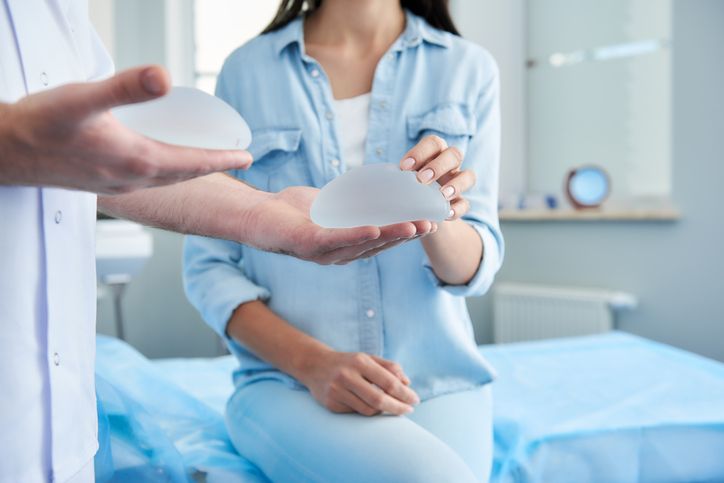
Breast implants are a type of cosmetic surgery in which implants are put into the breasts to change their size or shape. Even though breast implants might be good for some people, it's important to remember that each person's experience may be different. Among the possible perks are:
Enhanced appearance and self-confidence
Breast implants can change the size, shape, and alignment of the breasts in a big way, making the body look more balanced and attractive. This change in appearance often makes people feel better about themselves and their bodies.
Rejuvenation after pregnancy or weight loss
The size and shape of your breasts can change during pregnancy and when you lose weight. Breast implants can help people look younger and more beautiful again, giving them back the confidence they had before pregnancy or weight loss.
Reconstruction after mastectomy
When a person has had a mastectomy, breast implants can be an important part of the process of rebuilding. They help women feel feminine and whole again, which helps with social and mental healing after breast cancer treatment.
Balancing breast asymmetry
Implants can be a way to fix big differences in the size of your breasts and give you a healthier look.
Clothing fit and fashion choices
Some people find that breast implants make their clothes fit better, which lets them wear a wider range of styles.

4
Risks and Considerations of Breast Implants
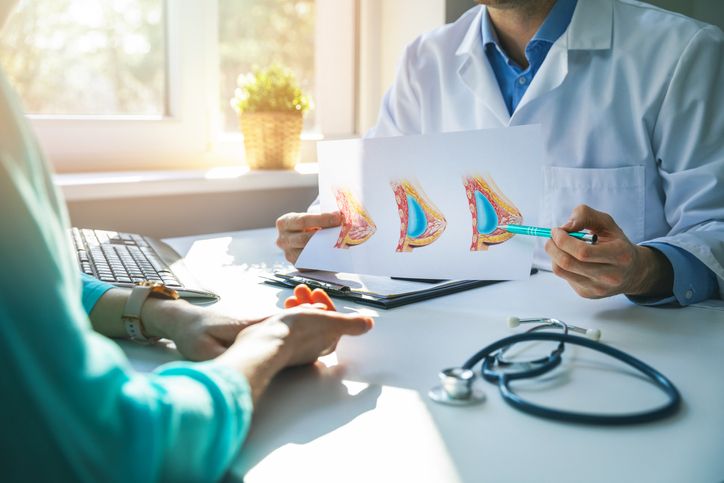
As with any surgery, breast implant surgery has risks and things to think about that you should know about and talk to an experienced plastic surgeon about. It's important to think about things like:
Potential complications
Any surgery has risks, and breast implant surgery is no different. Some of these risks are infection, bleeding, implant separation, capsular contracture, and changes in how the breast feels. To make an informed choice, you need to know about these risks and talk to a surgeon about them.
Long-term maintenance
Breast implants may need to be checked on or even replaced over time. It's important to follow up with regular checkups and do what the therapist tells you to do for long-term care.
Emotional considerations
Getting breast implants is a personal choice that should be made with realistic goals in mind. For a successful and satisfying result, it is important to understand both the positive and negative emotional effects.
Surgical risks
As with any surgery, getting breast implants comes with risks like infection, bleeding, a bad response to the anaesthesia, scarring, and problems with the incisions.
Capsular contracture
This is a situation in which the scar tissue around the implant tightens and presses on it, causing pain, discomfort, and a distorted appearance of the breasts. To fix this problem, you might need to have more surgery.
Implant rupture or leakage
Over time, implants can break or leak, which may mean that they need to be taken out or replaced. Leaks from silicone implants can be harder to find than leaks from saline implants.
Changes in sensation
Some people who get breast implants may experience brief or permanent changes in how their breasts or nipples feel. This can lead to either more or less sensitivity.
Breastfeeding difficulties
Breast implants may make it harder to breastfeed because they can change how much milk is made and how it flows. If you want to have kids in the future, you should talk to your doctor about this.
It's important to talk to a qualified plastic surgeon who can give you specific information about the risks, possible complications, and things to think about for your case. They can help you figure out what to do based on your own wants and goals. Now that we have a clearer understanding of the risks to consider before breast implant surgery, let's dive down into the procedures and how to prepare for it.

Book Now to Experience
B6 Bust Lift Treatment
1 Minute Self-Registration
Date should not be before minimal date

5
Preparing for the Procedures for Breasts Implant Surgery
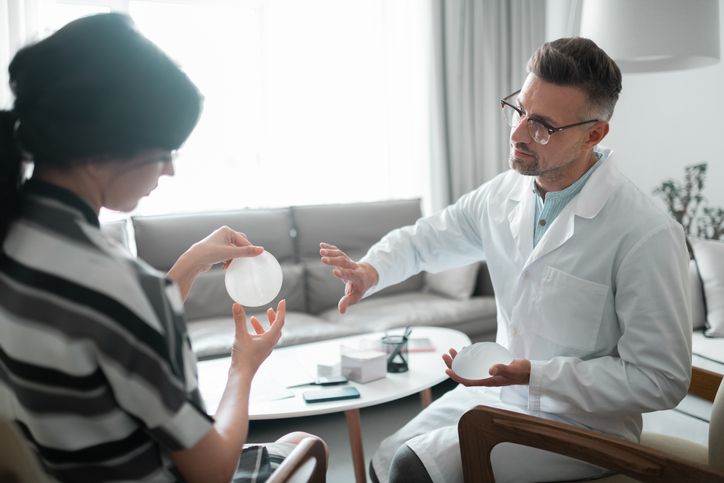
Getting ready for breast implant surgery includes a few steps that will help the surgery go well and reduce risks. The surgeon will give you specific directions, but here are some common ways to get ready:
Consultation with a plastic surgeon
Start by making an appointment with a trained plastic surgeon who specialises in breast augmentation. During this meeting, you will talk about your goals, your medical history, and any worries you may have. The surgeon will look at your breasts and tell you what type, size, and site of implant would be best for you.
Pre-operative assessments
Before the surgery, your doctor may order tests like blood work and a mammogram to make sure you are in good health and don't have any underlying conditions that could affect the process or your recovery.
Planning the surgery
Once you and your surgeon have decided on the type of implant (silicone or saline), the size, and where the cut will be made, you will set a date for the surgery. Your doctor will tell you what to do to get ready, such as what to eat, what medicines you can't take, and what other changes you may need to make to your life.
Anaesthesia
You will be given anaesthesia on the day of the surgery to make sure you are comfortable and don't feel any pain. Before the surgery, the type of anaesthesia that will be used will be talked about and decided (general anaesthesia or local anaesthesia with sedation).
Incision and implant placement
The doctor will make cuts in places that have already been decided, like around the areola, in the breast crease, or in the armpit. Depending on what you and your doctor talk about during your appointment, the chosen implant will be put behind the breast tissue or under the chest muscle.

6
Recovery and Aftercare After the Procedure

After the implants are put in, the cuts will be closed with sutures or medical tape. You will be watched for a short time in a recovery room to make sure that your vital signs are stable. For the best healing and effects, you need a good recovery and aftercare plan and here are a few important things to think about:
Post-operative care
Your doctor will tell you exactly how to take painkillers, antibiotics, and any other medicines that have been recommended. It's important to carefully follow these steps.
Supportive garments
You might be told to wear a supportive bra or a compression gear to give your breasts support and help reduce swelling. Follow your surgeon's advice about what kind of clothes to wear and for how long.
Rest and limited activities
After surgery, it's important to rest and not do anything too hard for a few weeks. This means not lifting big things, working out hard, or doing other things that strain the chest muscles. Your surgeon will tell you how to slowly start doing physical tasks again.
Monitoring for complications
Keep an eye out for signs of infection, such as more pain, redness, swelling, or pus coming from the wound site. If you have any signs that worry you, you should call your surgeon right away.
Follow-up appointments
Go to all of the follow-up visits with your surgeon that have been set up. These visits are important so that your doctor can check on your healing and answer any questions or worries you may have.
Managing discomfort and swelling
It's normal to feel some pain, swelling, and bruises after breast implant surgery. Your doctor may tell you to take painkillers and use cold packs or cold cloths to reduce swelling. Don't put ice directly on the places where the cuts were made.
Breast massage
After the first few weeks of healing, your doctor may suggest that you rub your breasts gently. Follow your surgeon's instructions carefully, though, because these massages can help avoid capsular contracture and make implants more mobile.
Long-term care
Check on your breast implants often and talk to your surgeon about any changes or worries. Breast implants are not made to last forever and may need to be replaced or taken out at some point.
Remember that the way each person recovers is different, and your surgeon will give you specific directions based on your situation. It's important to follow these rules closely to help the healing process and get the best results. You might be wondering if there is another method to increase your breasts size without going through surgery and not worry about the complications and all the risks to consider. Well, there is! Introducing B6 Bust Lift Treatment by New Beauty!

7
Exploring Non-Surgical Options: Enlarge your Breast with New Beauty's B6 Bust Lift Treatment!
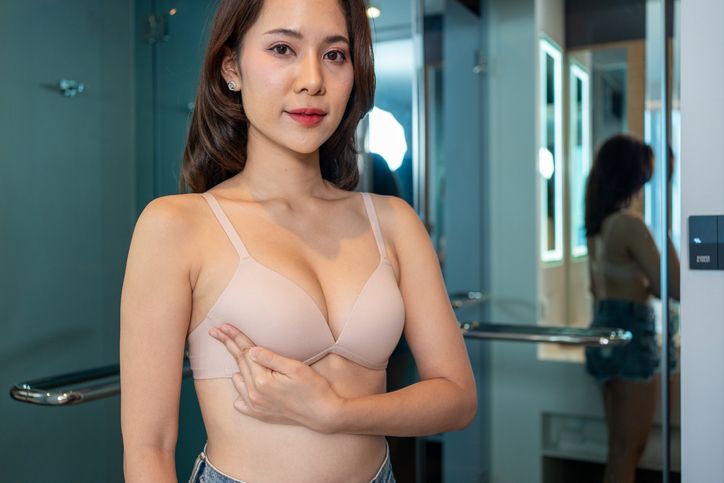
B6 Bust Lift Treatment is a non-surgical, non-invasive treatment that works by stimulating acupoints related to breast tissue to make hormones start coming out. The hormone lifts the shape of the breasts, tightens the skin on the breasts, thickens the breast tissue, and fixes problems with the shape of the bust.
The breast tissues consist primarily of fat with a small amount of muscle mass. As we age, we lose collagen, resulting in less support for breast tissue and fat. Since chest muscles are rarely trained and utilised, breast laxity is common among senior women. This breast lift procedure probe helps shift side-breast fat to the front for a centred and full-chested look, addressing skin and breast laxity to give perkier breast size!

8
Conclusion
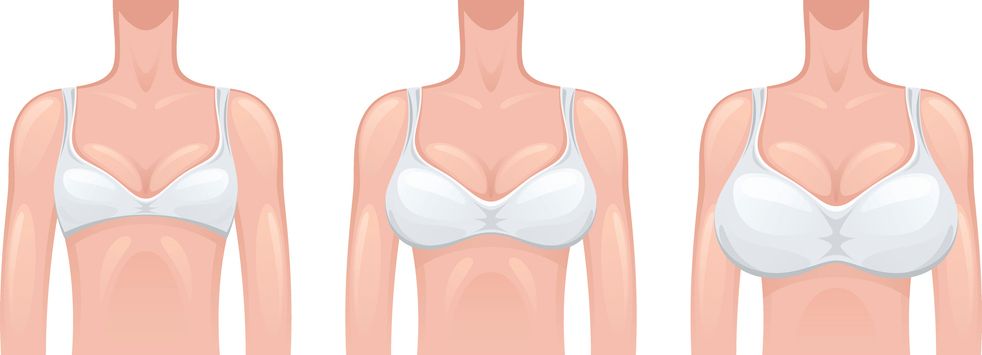
Breast implants not only change how a person looks, but they also help with their mental health. People can enjoy their own unique beauty when they accept diversity and are positive about their bodies. Don't forget to put safety first, stay informed of the side effects and make decisions that fit with your own goals and dreams. So, try out New Beauty's B6 Bust Lift Treatment today to achieve those dreams and have a healthier pair of breasts!
FAQ
1. Are breast implants safe?
Breast implants that are cleared by groups like the FDA go through a lot of testing to make sure they are safe. But, as with any surgery, there are risks and problems that could happen. It's important to talk to your therapist about these things and make an informed choice.
2. How long do breast implants last?
How long breast implants last can vary. Some may last for many years, but others may need to be replaced or taken out because of normal wear and tear, problems, or personal taste. Having regular checkups with your surgeon can help you keep an eye on how they are doing.
3. Can breast implants affect breastfeeding?
Most of the time, breast implants don't make it impossible to nurse. But they might change the amount or flow of milk. Before getting implants, you should talk to a doctor or nurse about your desire to breastfeed.
4. Can breast implants increase the risk of breast cancer?
Getting breast implants does not make you more likely to get breast cancer. But they can make it harder to find breast cancer through regular scans. It is very important to tell the mammography technician about your implants so that the right imaging methods can be used.
5. How soon can I return to my normal activities after breast implant surgery?
Recovery times can be different, but most people can do light tasks again after a week or two. For a few weeks, you should avoid doing hard work or moving heavy things to let your body heal properly. Your surgeon will give you special instructions that are made for you.

Book Now to Experience
B6 Bust Lift Treatment
1 Minute Self-Registration
Date should not be before minimal date
Recommended Articles
COPYRIGHT© NEW BEAUTY MANAGEMENT LIMITED 2025. ALL RIGHT RESERVED.



